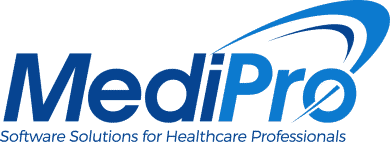According to experts, hospitals, and private practice that do not consider improving their patient payment collection by making it a top priority will face significant challenges. Private practices relied on payers to make the majority of the payments for services they offered in the past. Today, healthcare providers and patients face severe issues due to skyrocketing financial responsibilities ushered in by high-deductible health insurance plans. Experts state that high deductibles can translate to future bad debts because some patients are unable to pay a portion of their medical bills or not pay at all.
According to statements from The New York Times and Kaiser Family Foundation, about 20% of patients with insurance have difficulty paying for medical care. Additionally, the reports stated that this occurs when the patients’ co-pays represent about 20% of the providers’ revenues. The cost of collecting payments from patients is more complicated than securing reimbursements from commercial and government payers.
The patient’s self-pay account experiences a lower likelihood of making payments as it ages in account receivable (A/R). Furthermore, the additional resources incurred, such as employees to track, pursue, and manage the accounts, do not add to its value. Therefore, one must set up and implement a strong collection strategy that will cut costs, enhance efficiency, maintain patient loyalty, and streamline the healthcare provider’s revenue cycle.
Collect patient information and contact details before an appointment
Suppose a patient contacts your medical office to book an appointment. In this case, the front desk can utilize practice management software such as Lytec to collect and store complete patient information. Lytec also provides progressive tools for scheduling, medical billing, and reporting. Furthermore, this market-proven system can manage financial data regarding patient and insurance company payments.
If the patient is uncomfortable providing the information over the call, you can ask them to request the appointment through secure e-mail or online. The patient can fill their personal information on your practice’s HIPAA compliant healthcare portal and request a preferred date/time to be seen.
By utilizing electronic eligibility checking, this service will help your office remain up-to-date on a patient’s insurance coverage–which is paramount in the cycle of medical billing. Additionally, the information collected enables the staff to make purposeful patient payment follow-ups. You can even produce generalized billing reminders in your automated appointment reminder calls, texts, and emails. Your staff should always take the time to explain in detail your practice’s payment options.
Maintain transparency in the medical service treatment
One of the primary reasons why patients fail to pay healthcare bills stems from incurring substantial medical costs way above their budget. For instance, some patients find it difficult to estimate procedural out-of-pocket medical charges and other related expenses. Therefore, you should set a strategy such as a pre-bill service to request what percentage of the total bill needs to be paid upfront by the patient prior to the scheduled medical procedure. It is also helpful if you continue transparency and discuss how much should be covered by their insurance as well.
Use a collection agency or attorney
Some patients may choose not to pay for medical services, although they are financially well off to settle the outstanding bill. For such patients, you should hire a collection agency to ask for payment instead of using your staff to perform futile follow-ups. Another option would be to retain the services of a collection attorney firm. However, before you refer the patients with an outstanding bill to a collection entity, you should establish a period of limitation for patients. For example, if you placed the limit as three months and the patient fails to pay up after the period of time elapses despite receiving regular payment prompts, then collections assistance should be sought to pursue a balance settlement.
Maximize technological tools to enhance collections
Several tools are available that combine the most powerful technologies such as the CureMD Practice Management and Electronic Health Record (EHR) software. This national, award-winning medical software provides various methods to help simplify patient collections. It offers the ability to receive and process patient credit card payments through its Healthcare Portal while you sleep [merchant service account required]. CureMD also generates easy to understand patient statements that can be mailed, e-mailed, or pushed out to the portal for patient viewing and requested action. Based upon the medical office preference, this solution can even manage in-house patient payment plans. Whether you are scheduling or viewing an appointment, checking a patient in/out, charting an encounter, or referencing patient demographics–a patient’s outstanding balance is always viewable on your computer screen. In short, while using the certified CureMD software, there are several visual indicators that can initiate a conversation with the patient about their balance due during an office visit or while communicating outside of the practice.
Contact slow payers frequently
For your practice to run smoothly without financial challenges, you’ll want to ensure that patients make timely payments by frequently contacting slow payers. Firstly, train your staff to handle the patients with respect and follow a written script. Secondly, provide your staff with enough bandwidth and airtime to contact past-due patients at least once weekly as this will indicate the practice’s desire for expedient resolution.
Review practice finances with staff
One of the critical steps to boost or make significant improvements concerning patient payments requires correct tracking of results. These figures will determine which payment processes are working or failing. Additionally, review your current payment collection plans by having monthly meetings with the staff and or your accountant. It can provide an environment to brainstorm new strategies to improve your practice’s collection effort, make relevant changes, and hopefully improve cash flow. It’s also a good opportunity to remind the staff about being courteous and setting the appropriate tone when calling patients because the main objective is to motivate them to clear the debt.
